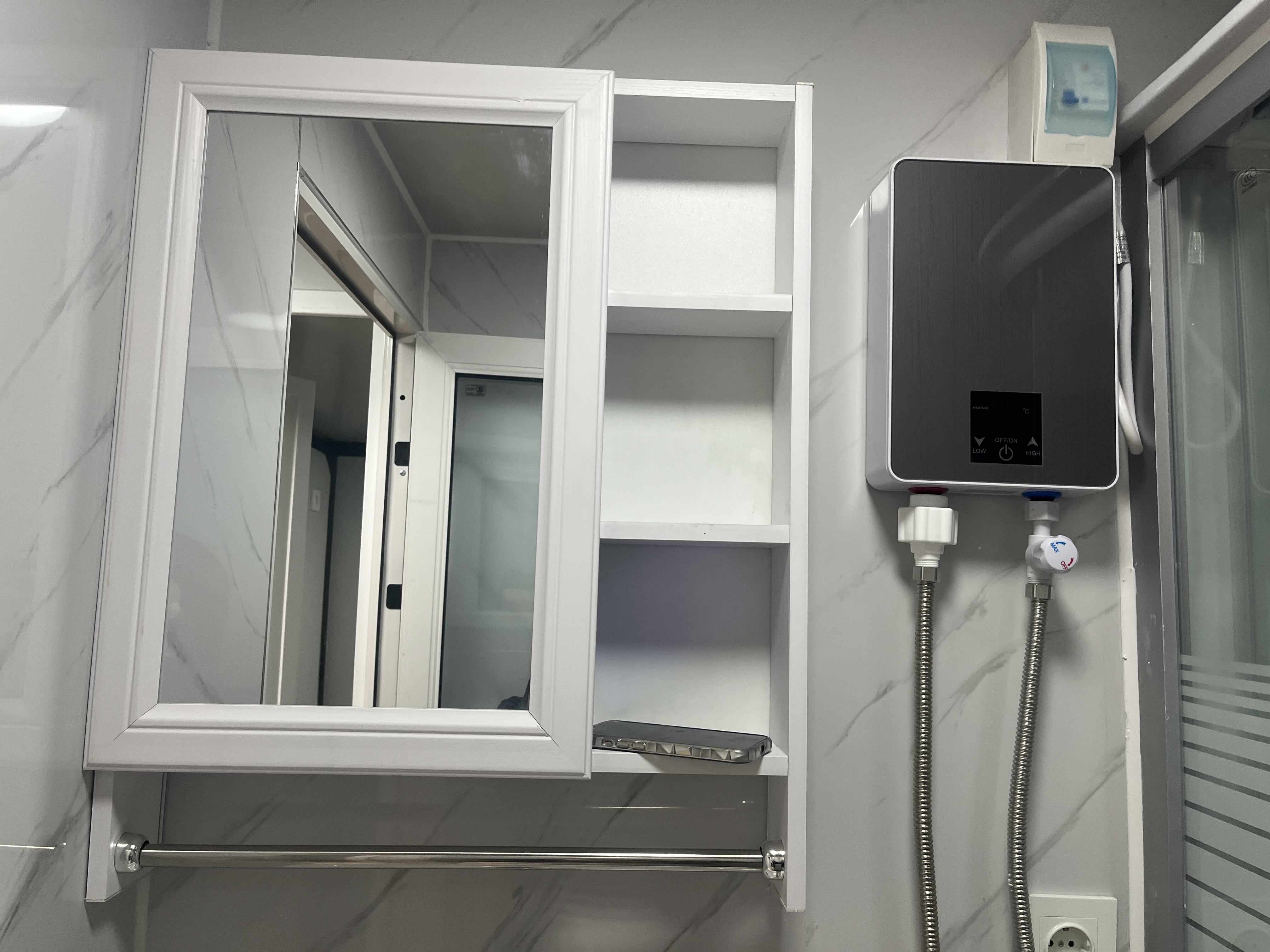The design landscape of prefabricated houses, also known as prefab homes, is currently undergoing a revolutionary transformation, marked by a series of advanced innovations that are redefining the concept of modern living. These trends not only reflect the evolving needs and preferences of homeowners but also align with the global push towards sustainable and efficient construction practices. As we explore the website https://www.qgbuilding.com/, we can clearly see how these innovative design elements are being integrated into prefabricated housing, making it a more appealing and practical choice for a wide range of consumers.
Smart Home Integration: A Leap into the Future
The advent of technology has ushered in a new era of convenience, and prefabricated houses are at the forefront of this revolution. Smart home systems have become an integral part of modern living, and prefab homes are no exception. From smart lighting that can be adjusted according to the time of day or mood to heating and air conditioning systems that can be controlled remotely via a cell phone, these features are now standard in many prefabricated houses. Security features such as smart locks and surveillance cameras that can be monitored from anywhere in the world add an extra layer of protection. This integration of technology not only makes daily living more convenient but also increases the energy efficiency of the home. For example, smart thermostats can learn the occupants' temperature preferences and adjust the heating or cooling accordingly, reducing energy waste. At https://www.qgbuilding.com/, you can find various prefab home models equipped with state - of - the - art smart home technology, demonstrating how technology can be seamlessly incorporated into prefabricated housing design.
Eco - Friendly Materials: Building a Greener Future
In an age where environmental consciousness is at an all - time high, the use of eco - friendly materials in prefabricated house construction has become a necessity rather than a choice. Startups in the prefab housing industry are increasingly turning to materials like steel, bamboo, and reclaimed wood. Steel, especially recycled steel, is a popular choice for its durability and strength. It requires less maintenance over time and can be recycled at the end of its life cycle, reducing the demand for virgin materials. Bamboo, on the other hand, is a rapidly renewable resource. It grows much faster than traditional timber, making it an environmentally friendly alternative. Bamboo has a natural aesthetic appeal and can be used for interior finishes, such as flooring and wall paneling. Reclaimed wood gives a unique character to the home while also reducing the environmental impact associated with logging. However, one challenge with these materials is the procurement, especially when it comes to obtaining them in large quantities. Despite this, the benefits far outweigh the drawbacks. Many prefabricated house manufacturers, as showcased on https://www.qgbuilding.com/, are committed to using sustainable materials, contributing to a more eco - friendly housing sector.
Modular Design: Flexibility Redefined
The prefabricated housing industry is witnessing a significant increase in the adoption of modular design. Modular homes are built using individual sections, which offer unparalleled flexibility in both design and layout. Homeowners now have the freedom to tailor their living spaces to meet their specific needs and preferences. For a small family, a modular prefab home could be designed with a cozy living area, two bedrooms, and a compact kitchen. As the family grows, additional modules can be added, such as an extra bedroom or a larger living room. This adaptability is not only beneficial for homeowners but also for developers. It allows them to create a variety of housing options on a single plot of land, maximizing space utilization. Moreover, modular construction is typically completed in a shorter time frame compared to traditional construction methods. Since the modules are pre - built in a factory - controlled environment, weather - related delays are minimized. This also results in less waste generation, as the manufacturing process is more precise. Many of the prefabricated house designs on https://www.qgbuilding.com/ highlight the advantages of modular design, with different layout options available for customers to choose from.
Biophilic Design: Connecting with Nature
Biophilic design has emerged as an important consideration in prefabricated house design. This design philosophy focuses on the connection between buildings and nature, aiming to integrate natural elements into architectural frameworks. One of the most common ways this is achieved is through the use of large windows. These windows not only flood the interior with natural light but also provide unobstructed views of the surrounding environment, blurring the line between indoor and outdoor spaces. Green roofs are another popular feature in biophilic - designed prefab homes. They not only add an aesthetically pleasing element but also help with insulation, reducing the energy required for heating and cooling. Indoor gardens are also being incorporated, allowing homeowners to grow their own herbs, vegetables, or flowers inside the house. This not only improves air quality but also gives a sense of well - being. Modern homeowners, especially those who are more environmentally conscious, prefer structures that enable them to interact with the natural surroundings. The prefabricated houses featured on https://www.qgbuilding.com/ often showcase biophilic design elements, appealing to a wide range of customers who value the connection with nature.
Clean Designs and Minimalism: Simplifying Living Spaces
The trend towards clean designs and minimalism is gaining momentum in the prefabricated housing market. Freshly designed prefab houses often feature clean cuts, open areas, and a strong sense of purpose. This aesthetic appeals to many modern homeowners who appreciate an uncluttered living space. In urban areas, where real estate is scarce and often cramped, minimalistic prefab homes offer a solution. These homes make the most of limited space with smart storage solutions and open - plan layouts. For example, a prefab studio apartment might have a Murphy bed that can be folded up during the day, creating more living space. The use of light - colored materials and simple geometric shapes further enhances the sense of openness. On https://www.qgbuilding.com/, you can find numerous examples of prefabricated houses that embrace this minimalist design approach, providing a stylish and functional living environment for urban dwellers and those who prefer a simple lifestyle.
In summary, the prefabricated house industry is brimming with fresh innovations. From smart home technology systems that enhance convenience to eco - friendly sustainable materials that contribute to a greener planet, from modular designs that offer flexibility to biophilic designs that connect with nature, and from clean and minimalistic aesthetics that simplify living spaces, there is something for every homeowner. These innovative design trends not only make prefabricated houses more appealing but also more sustainable and efficient, shaping the future of the housing market.





